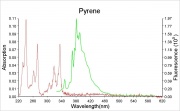Carbon tetrachloride
Jump to navigation
Jump to search
Description
A colorless, volatile liquid with a sweet, distinctive odor. Carbon tetrachloride was first produced in 1839 in Germany. It was used for many years to dissolve waxes, fats, and degrease metals. It was also a popular dry cleaning solvent and spot remover, however it is no longer widely used because of its toxicity. Carbon tetrachloride was once used as a single component fumigant and as a component in funigamt mixtures (Dowfume 75). Carbon tetrachloride was also used for a while in fire extinguishers (Pyrene), but was discontinued because it decomposed in high heat to form Phosgene, a highly poisonous gas.
Synonyms and Related Terms
tetrachloromethane; tetrachlormethane; perchloromethane; tetrachlorocarbon; Carbona; Pyrene
Risks
- Nonflammable.
- Forms phosgene in electrical fires, high heat or ultraviolet light.
- Very toxic by inhalation, ingestion and skin absorption.
- Carcinogen and teratogen in both males and females.
- ThermoFisher: SDS
Physical and Chemical Properties
- Miscible in ethanol, benzene, chloroform, ether, carbon disulfide, ligroin.
- Insoluble in water at room temperature. At elevated temperatures, carbon tetrachloride can slowly react with water to form hydrochloric acid.
| Composition | CCl4 |
|---|---|
| CAS | 56-23-5 |
| Melting Point | -23 C |
| Density | 1.589 g/ml |
| Molecular Weight | mol. wt. = 153.8 |
| Refractive Index | 1.4607 |
| Boiling Point | }
ComparisonsResources and Citations
|
